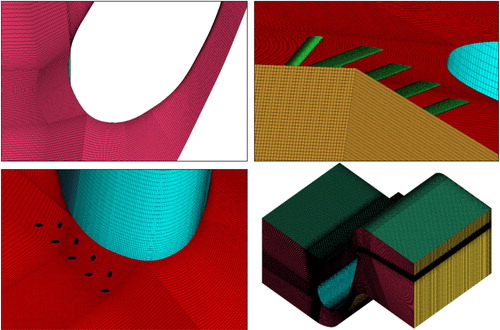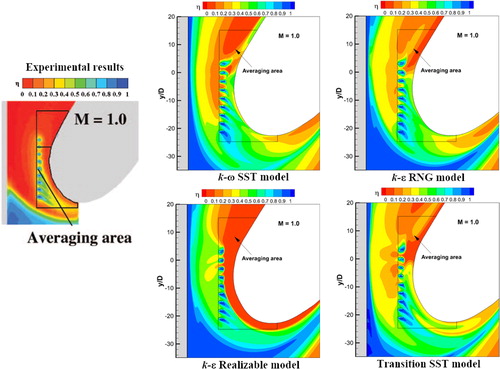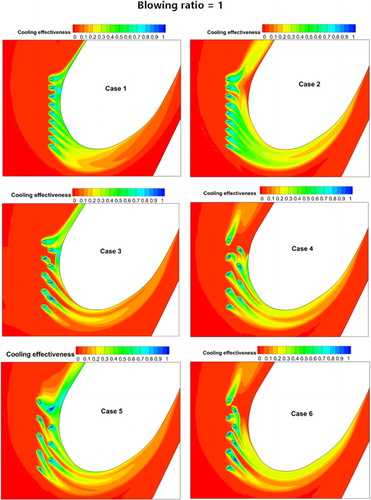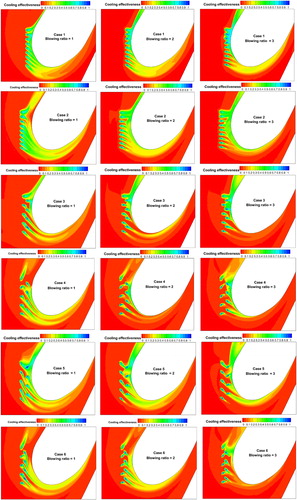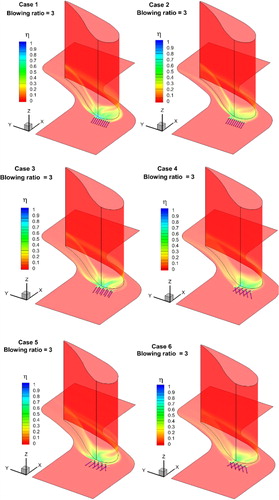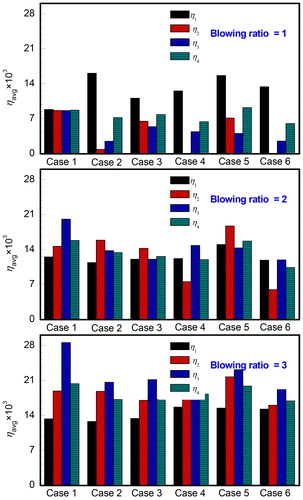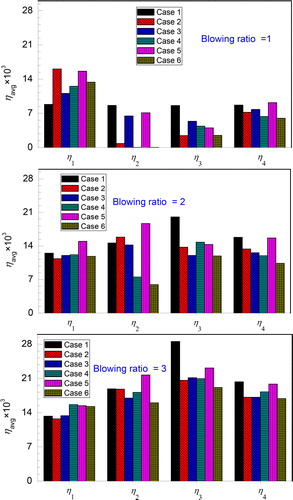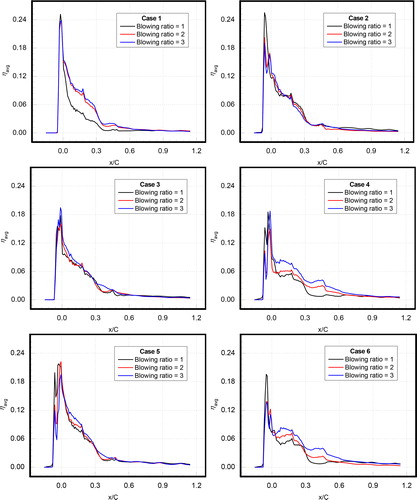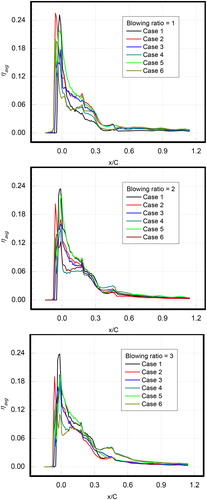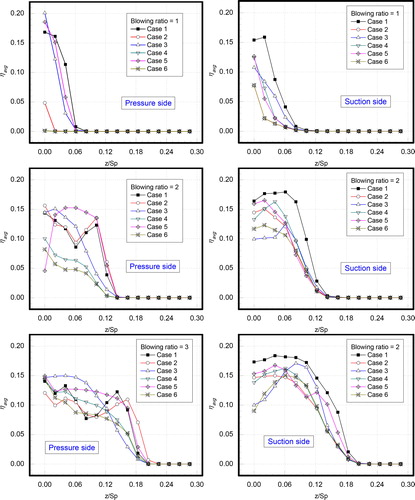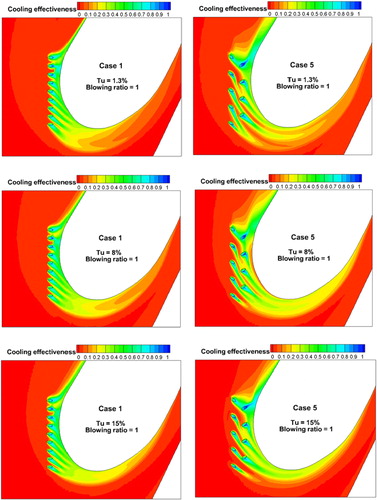Figures & data
Table 1. Mesh indepence study.
Figure 3. Turbulence model validations: comparisons of pressure coefficients and averaged Stanton number along the streamwise direction.
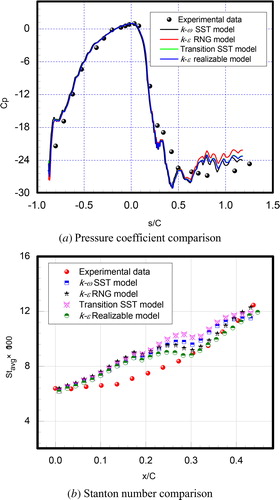
Figure 8. 3-D streamlines from the leading film cooling holes for different cases at blowing ratio = 3.
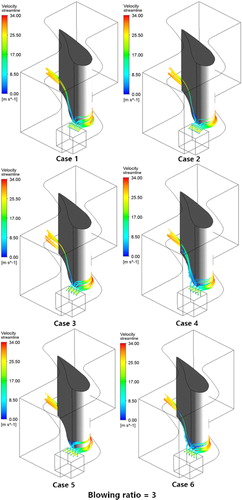
Table 2. Averaged film cooling effectiveness.
Figure 13. Averaged film cooling effectiveness distributions on the vane surfaces along the spanwise direction at different blowing ratios.



